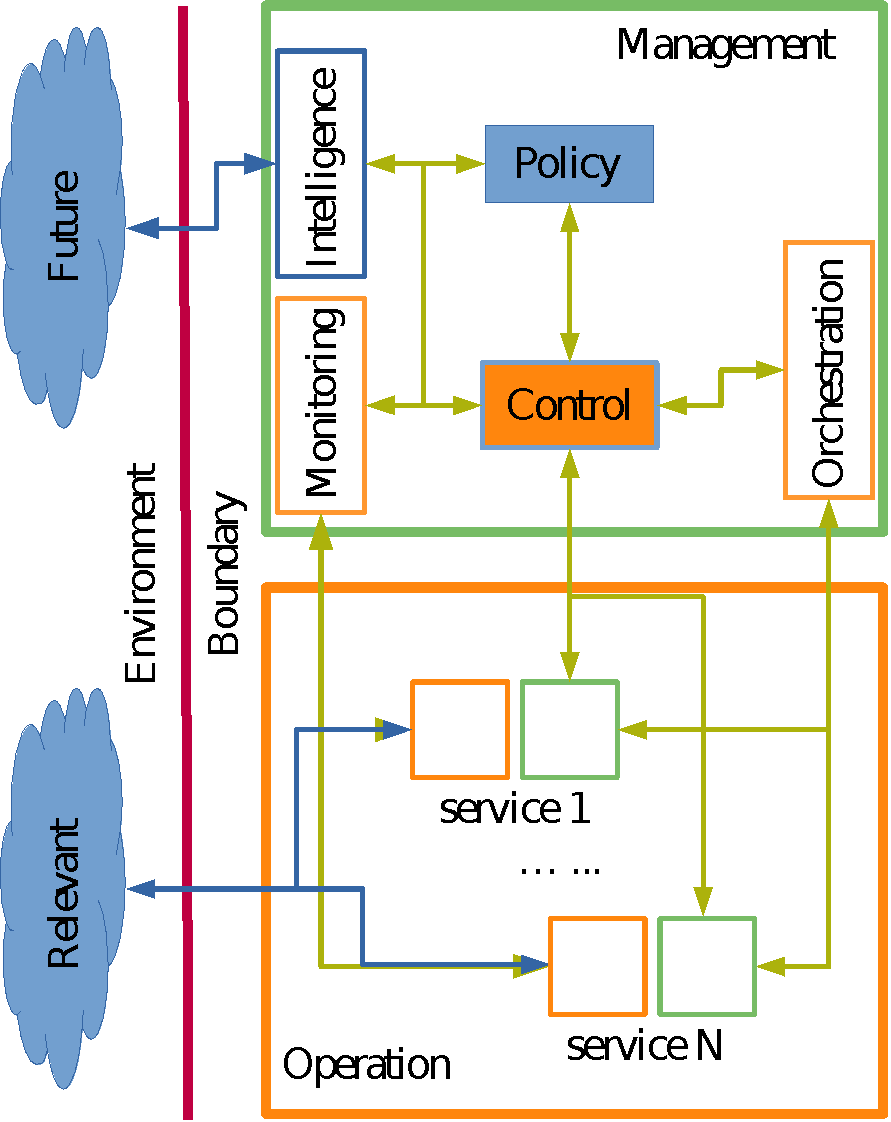VSON Manages Network Complexity
Networks are complex systems characterized by large numbers of heterogeneous components and a high degree of interconnections among them, but a new methodology could help reduce these complexities.
The “Viable system of networking” (VSON) utilizes cybernetics to manage networking complexity. Similar to the viable system model (VSM) of organizations, VSON can be used as a conceptual and functional tool to design a viable networking system.
COEXIST AND CO-EVOLVE
Networks don’t exist in a vacuum—in order to be viable, they need to coexist and co-evolve with their environment. VSON consists of four basic units (Fig. 1):
- Environment
- Operation
- Management
- Boundary

The operation and management of a network interact with Environment. A viable network must be secure to be able to defend its Boundary from a hostile Environment. Separating Operation and Management in networks reduces Environment complexity at the Management level.
In the VSON, the complexity of the Environment is always larger than the complexity of the network, and the complexity of the network is always larger than the complexity of Management. Based on these relationships, complexity of Environment can be managed using three strategies: policies, variety engineering and recursion.
Policies specify goals, therefore network complexity is reduced to relevant complexity defined by the goals, and Environment is reduced to Relevant Environment, which is much less complex than the Environment as a whole.
Variety engineering manages complexity by attenuating unwanted varieties and amplifying requisite varieties. Placing a firewall at the Boundary to block security threats is an example of attenuation. An example of variety amplification is to increase services and capacities in Operation. Maintaining Control at the Management level to keep Operation in line with the goals is an example of mixed attenuation and amplification.
Recursion utilizes fractal structure to manage complexity of large networks. A fractal structure is self-similar across different scales: viable systems are made up of viable systems (Fig. 1). Each viable system manages its share of the total complexity that VSON has to manage. At the same time, the services of these viable systems must be controlled in order to contribute to the goals of VSON as a whole.
Similar to but not the same as VSM, VSON has six components (Fig. 1):
- Operation
- Orchestration
- Control
- Monitoring
- Intelligence
- Policy
VSON uses Operation, Orchestration, Control and Monitoring to realize its goals and Control, Monitoring, Intelligence and Policy to adapt them. Each of the services in Operation is a viable system, has its own goals, own Relevant Environment, own Operation and own Management. These services share some common resources, and may contribute to the same goals, therefore, Orchestration is needed to ensure that services don’t conflict with one another.
Operation and Orchestration are necessary but not sufficient for VSON, because each service can still pursue its own goals without contributing to the system as a whole; therefore, Control and Monitoring are needed. Through Control, the goals of VSON are translated into goals for the services in Operation and through Monitoring, quality, efficiency, security and reliability of services are guaranteed. Operation, Orchestration, Control and Monitoring are necessary as a cohesive whole to realize VSON goals, but they are not enough to make VSON viable. Intelligence analyzes information from both outside Future Environment and inside Monitoring feedback (via Control) to find patterns and predict trends and recommends new ways to adapt to Policy. By defining goals and coordinating the interaction between Control and Intelligence, Policy determines the identity of VSON and the ability to adapt. These six components, together with communications among them, are necessary and sufficient for VSON.
One example of VSON is software defined networking (SDN) where Policy, Control and Operation are similar to the Application, Control and Data layers in SDN. However, the Management and Hardware layer supporting VSON can be anything from SDN to legacy networking, or a combination of both.
In fact, networking in VSON is so broad that it covers, for example, social networks and knowledge networks as well. Embedded in the recursive structure of VSON, but absent in SDN, are the concepts of “Divide and Conquer” and subsidiarity. The Divide and Conquer strategy breaks a problem down into two or more sub-problems recursively to manage scale up complexity. The principle of subsidiarity resolves problems as close as possible to where they occur, and only pass along decisions elsewhere when it really needs to do so. Due to lack of Intelligence, SDN only has adaptability through programming.
Ling Ling Sun is the CTO for Nebraska Public TV. Many thanks to Tom Butts for help in editing this article.
Get the TV Tech Newsletter
The professional video industry's #1 source for news, trends and product and tech information. Sign up below.

Ling Ling Sun is chief technology officer of Nebraska Public Media, a statewide network providing content through its TV and radio stations and other multimedia platforms. Using a viable system model as a tool, she leads technology transformation at Nebraska Public Media and has led her team in many successful projects and initiatives that enhance and expand Nebraska Public Media services. From 2013 to 2018, Sun served two terms as chair of PBS ETAC (Public Broadcasting Service Engineering Technology Advisory Committee) and as a member of the PBS Interconnection Committee. Currently, she is chair of the NAB Broadcast Engineering and Information Technology Conference Program Committee and a member of the Nebraska Information Technology Commission Technical Panel. She is a 2019 Broadcasting+Cable Technology Leadership Award honoree. Ling Ling was among the “Top 50 Women Leaders in Technology of 2022” announced by “Women We Admire.”
